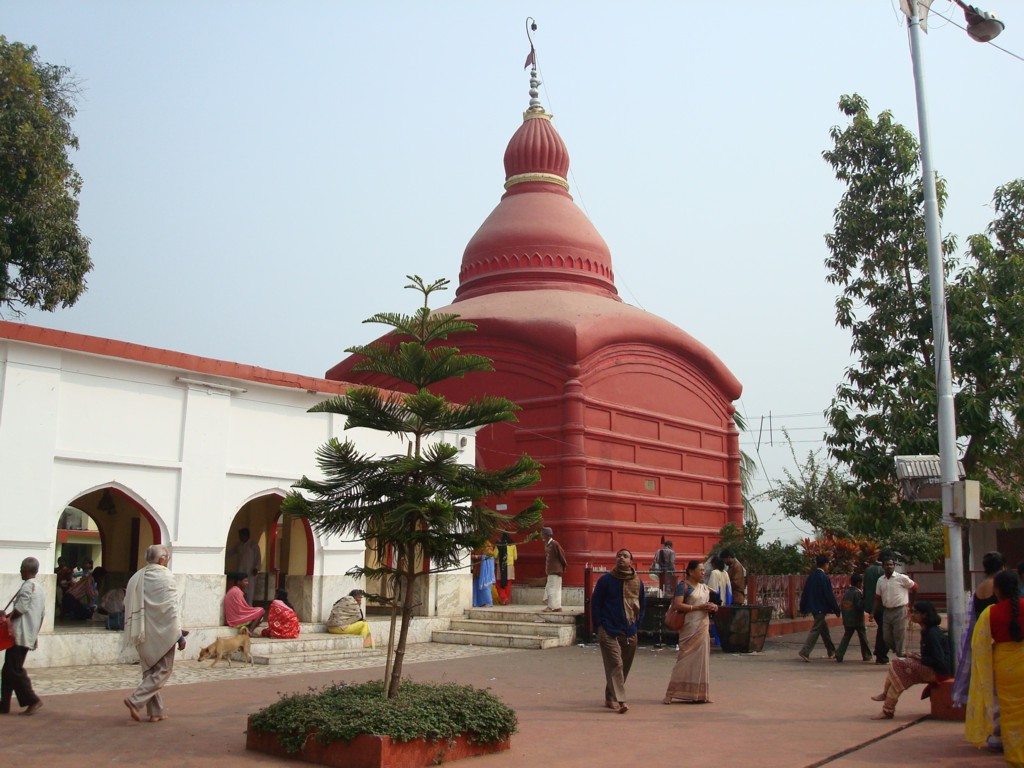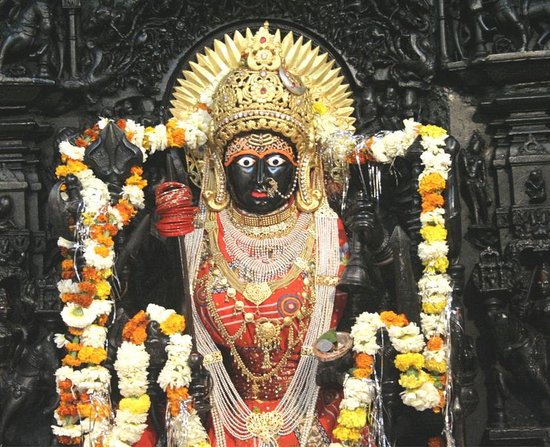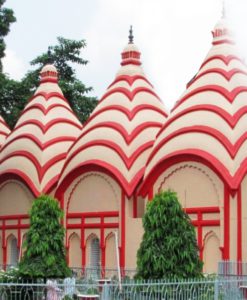No products in the cart.
Tripura Sundari Temple is situated in the ancient Udaipur, about 55 km from Agartala, believed to be one of the holiest Hindu shrines in this part of the country. Popularly known as Matabari, crowns in a small hillock and is served by the red-robed priests who traditionally, minister to the mother goddess Tripura Sundari. Considered to be one of the 51 Shakti Peethas, consists of a square type sanctum of the typical Bengali hut. It is believed that Sati’s right foot fell here during Lord Shiva’s Nataraj Dance.
Tripura Sundari temple, Tripura;
Legend has it that king Dhanyamanikya who ruled Tripura in the closing years of the 15th century, had a revelation one night in his dream, ordering him to install Goddess Tripurasundari in the temple that stood on a hilltop near the town of Udaipur. The temple was already dedicated to Lord Vishnu, and the king was confounded initially, unable to decide how a temple dedicated to Vishnu could have an idol of the consort of Shiva. However, the oracle repeated the divine injunction to the king once again the following night, thereafter the ruler decided to obey the ethereal command, notwithstanding the fact that Vishnu and Shiva typified two different sects of religious following. Thus, the Tripura Sundari temple came into being in around the year 1501, and is now about 500 years old. This legend is recounted as one of the example of how solidarity between the two sub groups, the Vaishnava and Shaiva sects, was known and fostered even during medieval times.
Goddess Parvati (also spelt as Parvathi) is worshipped here as Tripurasundari, Tripureshwari and “Soroshi” (a local variation of the name). The temple is a small, square edifice, measuring just 24 square feet (7 square metres) at the base with a height of 75 feet (24m approximately). The structure of the shrine resembles that of a tortoise, with a roof shaped like the humped back of a tortoise. For this reason, the shrine is also known as “Koorma Peetha” (Koorma meaning Tortoise). As in other typical Hindu shrines, stalls along the approach road sell flowers and baskets of offerings that visitors can buy and take up to be offered to Tripura Sundari and returned as Prasadam. A specialty here is the sweet, brown, condensed milk Pedas that devotees carry back from the temple, to be distributed among family and friends back home. The red hibiscus flower is also prized as an offering.
The temple consist a square type sanctum with a conical dome. It was constructed by Maharaja Dhanya Manikya Debbarma in 1501, there are two identical images of the same deity inside the temple. They are known as Tripura Sundari (5 feet high) and Chhotima (2 feet high) in Tripura. The idol of Maa Kali is worshiped at the temple of Tripura Sundari in the form of ‘Soroshi’. One is made of kasti stone which is reddish black in colour. It is believed that the idol was Chhotima was carried by king in battlefield. This temple is also known as Kurma Pitha because it the temple premises resembles kurma i.e. tortoise.

By road: Tripura Sundari Temple is situated in the ancient Udaipur, about 55 km from Agartala, believed to be one of the holiest Hindu shrines in this part of the country. Agartala is well connected by road to other parts of the Indian state of Tripura. Agartala is also connected to Assam (749 km) by the National Highway 44 whereas other important cities like Silchar (460 km), Guwahati (785 km), Shillong (686 km), Dharmanagar (173 km) and Aizawl (293 km) are connected with NH44 and NH44A. Bus service, Jeeps, Cabs and SUVs are the various modes of transport system within the city.
By Rail: Former Prime Minister H. D. Deve Gowda laid the foundation stone of 119 km Kumarghat-Agartala railway project in 1996 and Agartala has been connected to other cities in India since June 2008. Agartala is only the second capital city (after Guwahati, Assam) in the northeast to be connected to the country’s railway network. A rail link between Agartala and Akhaura, Bangladesh was approved by the Government of India in September 2011. Buses and cab facilities are also available from the rail head for various other places.
By Air: Agartala Airport is one of the busy airports of the north east and connects Agartalato other cities of India. Kolkata, Imphal, Delhi, Silchar, Aizwal, Guwahati, Bangalore, Chennai, Ahmadabad and Mumbai have connections for this city. Several major airlines like Air India, Jet Airways, and Indigo Airlines provid their air services to customers taking flights to Agartala.

Every year on Diwali, a famous Mela takes place near the temple which is visited by more than two lakhs pilgrims.
The offering of animal sacrifices is a very popular custom. Goats are brought with garlands round their necks, as offerings. A notice board lists the charges for buffalo sacrifices, but these are obviously rare today.
Kalyan Sagar lies in the eastern side of the temple. Spreading over 6.4 acres, with a length of 224 yards and width of 160 yards this large expanse of water adds a dimension of great beauty to the temple precincts, with hills rising picturesquely in the background. The water is full of Tortoises, some of them quite large, that come up to the shore looking for crumbs of food that visitors buy at the nearby stalls and feed to these reptiles, as part of the rituals. Devotees feed them with “muri” and biscuits.









